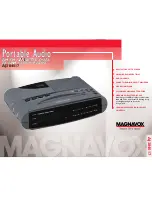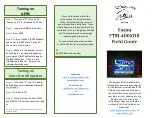
14
MAXIMUM RANGE
The maximum range and quality of CB
radio transmissions vary depending on
the following conditions:
• the type and quality of antenna used
• the height of the antenna’s mounting
location — the higher the antenna,
the better the signal’s range
• the surrounding terrain — moun-
tains and tall buildings limit the
range
• weather conditions
• the number of nearby radios operat-
ing on the same channel
• standing wave radio (SWR)
between the antenna and the CB
Note: Your CB radio’s transmission
range is generally line-of-sight.
REDUCING NOISE
Because your CB is exceptionally quiet,
any noise you hear is probably from an
external source in your vehicle such as
an alternator, another radio or spark
plugs.
The transceiver uses an ANL (Automatic
Noise Limiter) circuit to reduce noise.
However, if possible, try to eliminate the
noise by finding its source.
You can determine the noise’s source
by turning off the engine and operating
the CB with your vehicle’s ignition set to
ACC (or ON). If the noise is reduced, the
problem is in your vehicle’s ignition or
electrical system.
Here are a few hints to help you reduce
or eliminate such noise.
• Make all CB power and antenna
wires as short as possible.
• Route the power wires away from
the antenna wires.
• Be sure that the chassis ground
connection is secure.
• Replace old ignition wires with new,
high-voltage, noise suppression
wires.
• Install noise suppressors on your
spark plugs, or install new spark
plugs that have built-in noise sup-
pressors.
• If problems persist, check your alter-
nator/generator and regulator
gauges. You can reduce the noise
from these sources by using bypass
capacitors at the various output volt-
age points.
Your local RadioShack store has a wide
selection of noise suppression accesso-
ries.
21-1702.fm Page 14 Thursday, August 5, 1999 1:02 PM






































